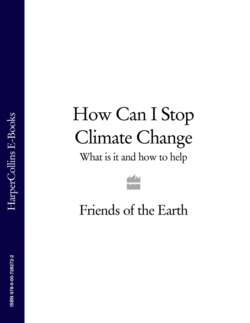Читать книгу How Can I Stop Climate Change: What is it and how to help - Литагент HarperCollins USD, F. M. L. Thompson - Страница 51
carbon and carbon stores
ОглавлениеOften described as the building block of life, carbon is present in all living things. It is the fourth most common element in the universe and is found in millions of different compounds. Commonly found in mineral form as coal, it is also in oil and methane (the main constituent of natural gas). When burnt, carbon combines with oxygen to form carbon monoxide (CO) and, more often, carbon dioxide (CO2). The world’s oceans, forests and soils absorb huge quantities of carbon, in the form of carbon dioxide, from the atmosphere.
Plants take carbon dioxide out of the atmosphere through photosynthesis. When a tree is cut down and burnt, some of the stored carbon in the tree converts back into carbon dioxide and escapes into the atmosphere.
Oceans absorb around half of the carbon dioxide in the atmosphere mostly as dissolved bicarbonate. Like plants, plankton in the sea take up carbon dioxide through photosynthesis. But as oceans warm they absorb less. The increasing concentration of carbon dioxide in the atmosphere is also increasing the acidity of the oceans and damaging marine life.
Organic material in soil takes carbon dioxide out of the atmosphere. More carbon is held in the world’s soils than in the atmosphere. But the capacity of the soil is limited and over time the amount of carbon dioxide escaping into the atmosphere will increase.
